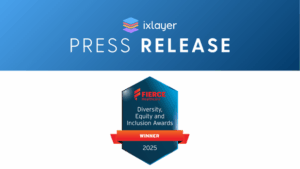Compliance Considerations for Direct-to-Patient Programs: What Pharma Needs in a Trusted Partner
By Pouria Sanae, CEO, ixlayer
As biopharma companies expand their use of direct-to-patient (DTP) programs, the compliance landscape is evolving alongside them. These programs offer significant potential for giving pharma companies back the power to help patients, through smarter engagement, better access, and a more connected care experience, but they also introduce new questions about clinical independence, data sharing, and regulatory risk.
Recent federal scrutiny, including the Senate report issued in July 2025, underscores the need for clear guardrails and sharp attention to compliance details around how DTP programs are structured and operated. This includes the role of telehealth, the relationship between pharmaceutical companies and clinical decision-makers, and the integrity of data and privacy protections.
Below, we discuss some key considerations for building DTP programs that balance innovation with regulatory compliance and safeguard patient trust.
Pharma should avoid direct relationships with telehealth providers
One of the core compliance concerns raised by the Senate report was the potential for inappropriate influence when pharmaceutical companies are directly connected to prescribing clinicians, either contractually, financially, or operationally.
In recent months, we’ve heard a consistent refrain from biopharma partners: We don’t want to be in a direct relationship with telehealth.
That’s not just a preference, it’s a compliance strategy.
Pharma companies are right to be cautious. Direct ties to a single telehealth provider may raise concerns about inducement, patient steering, and exposure to activities that the brand itself cannot control. That’s why working with an intermediary partner is emerging as the preferred model.
Programs designed with a layer of separation between pharma and clinical care reduce the risk of perceived inducement to prescribe specific medications. It also prevents steering patients toward specific providers or care pathways. A layer of separation also removes the likelihood of unintended data exposure between pharma and healthcare professionals and precludes conflicts of interest arising from financial relationships between pharma and prescribers.
Programs that insulate pharma from clinical workflows, while preserving transparency and accountability, are better positioned to meet regulatory expectations and maintain public trust.
The importance of optionality and multi-network routing
From a compliance standpoint, exclusivity is a red flag. Steering patients to a single telehealth organization, even unintentionally, can invite scrutiny. Biopharma organizations should look for DTP partners that offer multi-network routing.
Platforms that integrate with multiple clinical networks are designed to support rules-based, non-preferential routing, ensuring patients are offered access to appropriate care providers without any appearance of bias or inducement. This is not just a safeguard, it’s a best practice.
Offering multiple telehealth options mitigates risk by allowing patients to make independent choices about their care. Best practices include providing patients access to multiple, credentialed clinical networks as well giving them the option to use their own provider or search for in-person care. Supporting multiple modalities, including video visits, phone consultations, asynchronous care (as clinically appropriate), and in-person care alleviates certain compliance risks, expands patient access beyond the traditional model, and delivers a robust and powerful DTP program.
Speaking of multiple options, allowing patients to choose among lab testing options (e.g., service centers, mobile phlebotomy, at-home collection) is another hallmark of strong programs that provide real optionality for patients.
These programs are not only more compliant, they’re more inclusive and patient-centered.
Safeguarding clinical independence
Preserving the independence of healthcare providers is fundamental. In a compliant DTP program, providers should develop and follow their own clinical protocols without input from pharmaceutical sponsors.
It’s paramount that providers receive no incentives, bonuses, or performance-based compensation tied to prescribing activity. Ideally, providers should be unaware of whether patients were routed from a specific brand or program and evaluate patients according to clinical guidelines, including review of relevant test results or medical records. Providers should also maintain responsibility for follow-up care, care coordination, and documentation.
Additionally, pharma companies should not participate in the creation of clinical tools, training materials, or discussion guides used by providers. Any appearance that the brand is influencing clinical decision-making should be avoided.
Clinical services should not be paid for by pharma
Another area of risk involves the financial relationship between pharmaceutical companies and care delivery organizations.
To avoid the appearance of kickbacks or inducements, programs should be structured so that telehealth and clinical service providers charge standard, fair-market-value fees and patients or their insurers, not pharma, pay for those services.
The program should offer no rebates, co-pay assistance, or other pharma-sponsored incentives to subsidize clinical evaluations. It’s important that compensation is not tied to prescribing behavior, patient volume, or brand selection.
Maintaining financial distance between pharma and clinical services is essential to avoiding regulatory scrutiny, especially under the federal Anti-Kickback Statute.
Monitoring quality and clinical appropriateness
Even when the structural components of a program are sound, ongoing oversight is critical. This includes:
- Vetting telehealth providers for adherence to clinical best practices and applicable regulations
- Ensuring that patient-facing content (such as screening tools, physician finders or symptom checkers) does not introduce bias or lead patients toward specific treatment
- Imaging and blood based diagnostics significantly strengthen compliance by adding documented clinical support to diagnoses
Quality assurance in a DTP context is not one-and-done. It’s a continuous process that should involve both internal and external reviews.
Compliance by design
The most successful DTP programs aren’t those that navigate around compliance. They’re the ones that build it into every step.
That includes:
- Having a neutral intermediary partner between pharma and clinical care
- Integration with multiple telehealth networks to avoid steering
- Real-time visibility and oversight into clinical workflows
- Enabling consent, routing, fulfillment, and education within compliant guardrails
- Supporting patient privacy, data minimization, and robust vendor controls
DTP programs offer a powerful opportunity to improve access, remove friction, and better support patients. But to do that at scale, and with confidence, biopharma companies need a partner who understands both the innovation and the oversight.
To expand access without expanding risk, compliance needs to be treated as a strategic asset, not a speed bump.
About ixlayer
ixlayer has the only end-to-end, direct-to-patient platform built for biopharma and optimized for patient choice. We help biopharma companies connect with patients from testing to treatment with speed, transparency, control and impact.




